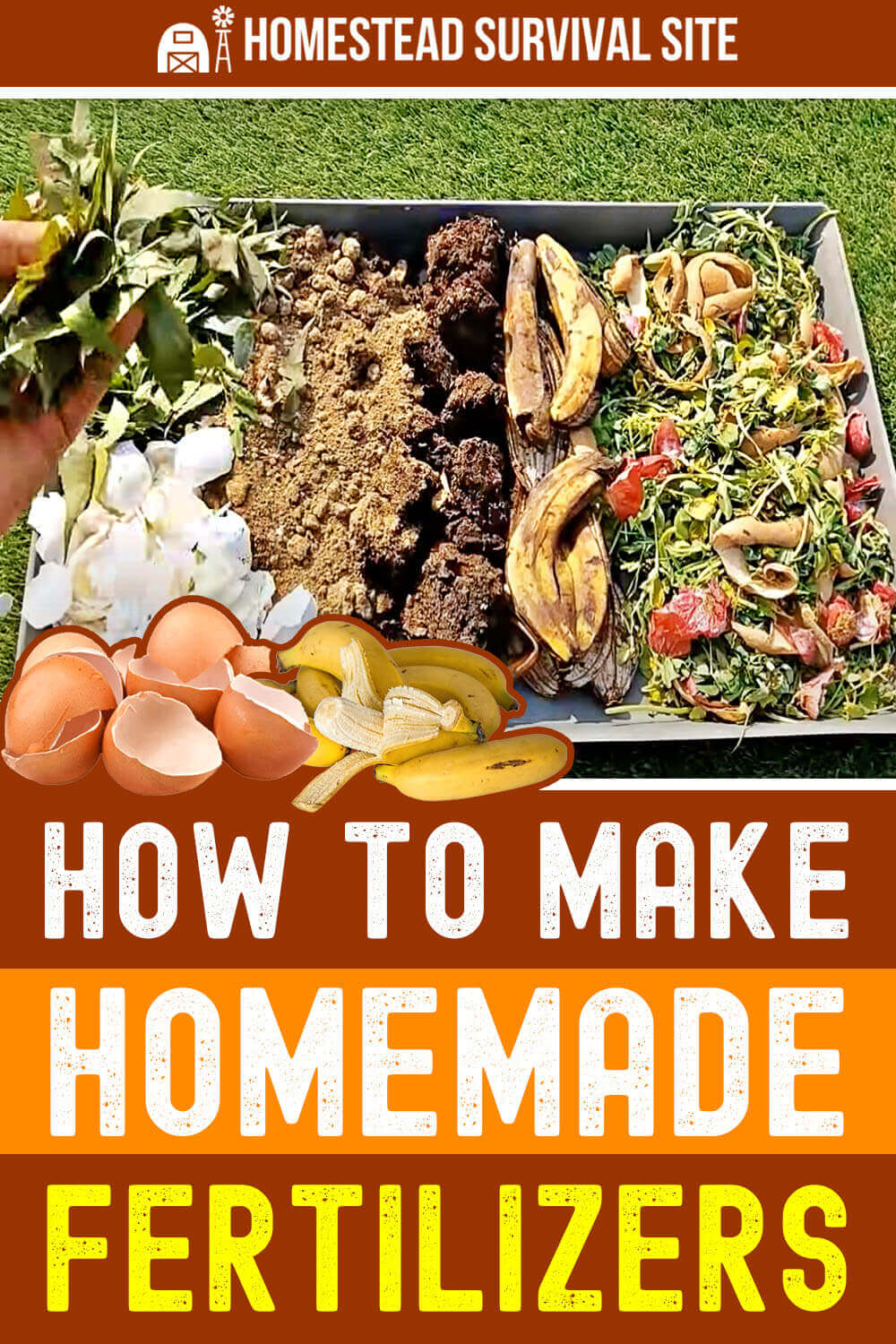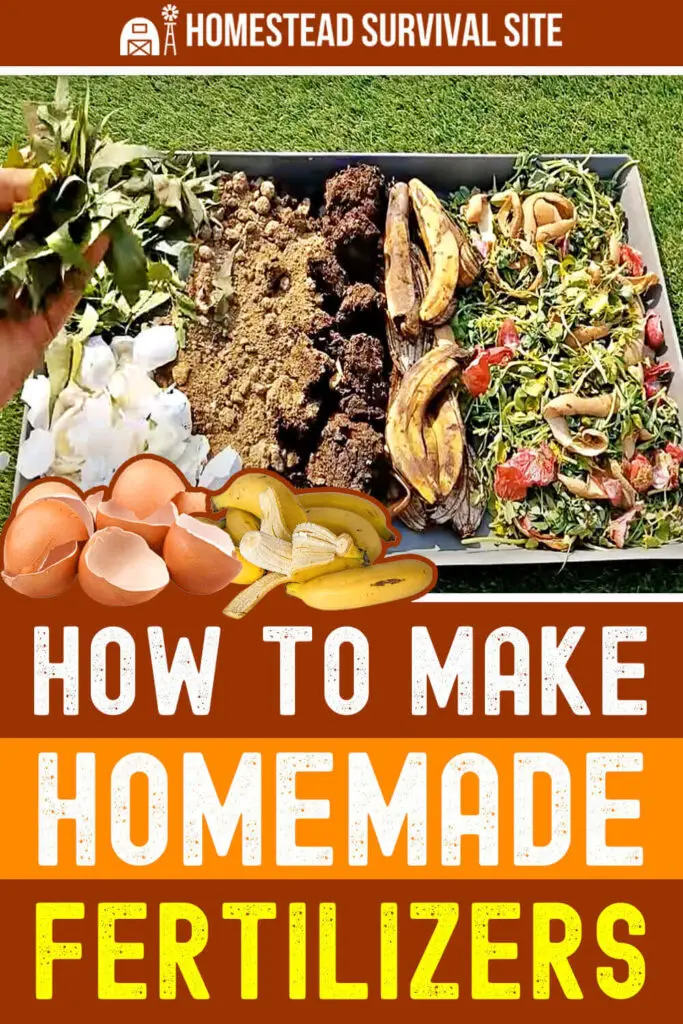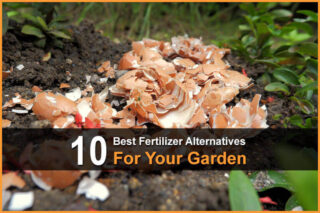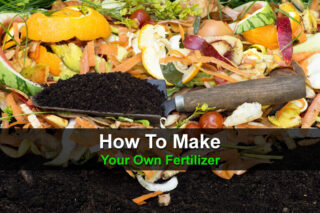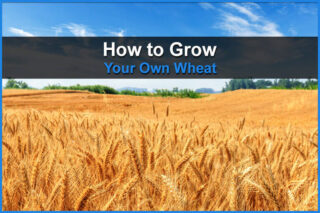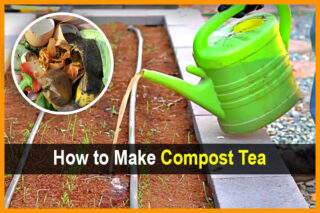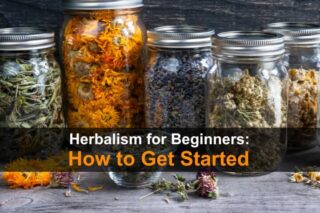Estimated reading time: 11 minutes
Everyone knows that the key to a thriving garden is using quality fertilizer. But what if you don't want to pay the high price for pre-made fertilizers from your local gardening store?
Well, fear not. There are a few little-known hacks you can use to make your own homemade fertilizers. Keep reading and learn how you can save money on fertilizer and get your garden growing in no time.
Want to save this post for later? Click Here to Pin It On Pinterest!
What Are the 3 Main Ingredients in Fertilizer?
Everyone knows that fertilizer is essential for a healthy garden and lawn. But what exactly is in fertilizer, and how do you know which kind is right for your plants? Below, we’ll explore the three main ingredients of fertilizer—NPK (nitrogen, phosphorus, and potassium). Let’s dive in.
NPK
The three main ingredients of most fertilizers are nitrogen (N), phosphorus (P), and potassium (K). These nutrients are essential for the growth of healthy plants.
Nitrogen helps with plant growth and greening up foliage; phosphorus encourages root development; and potassium helps build strong cell walls and increases resistance to drought and disease.
When buying a fertilizer, look for an analysis label that shows the percentage of each nutrient present in the product—this will help you choose the right type of fertilizer for your plants. And if you're making your own fertilizer (more on this below), pay attention to these ratios to ensure the health of your plants.
Natural Vs Synthetic Fertilizers
When it comes to fertilizing your garden, you have two options: natural fertilizers or synthetic fertilizers. But which one is better? Well, the answer is…it depends.
Natural fertilizer is derived from plants and animals and typically contains nitrogen, phosphorus, potassium, calcium, and magnesium. It's often made from composted plant material like manure or grass clippings; other examples include bone meal, seaweed extract, and kelp meal.
Natural fertilizer works slowly because it needs to decompose before it can be used by plants. This can take anywhere from several weeks to several months depending on the temperature of the soil.
The advantage of using natural fertilizer is that it helps create a healthy environment for your plants by improving the structure of the soil and providing essential nutrients over time.
Synthetic fertilizers are made in a laboratory and often contain ingredients like ammonium nitrate or urea. They tend to work quickly because they're already broken down into forms that plants can absorb as soon as they're applied to the soil.
The downside of synthetic fertilizers is that they can harm beneficial organisms in the soil and even leach into groundwater if not applied properly. Plus, they don't provide any long-term benefits to the soil since they'll eventually wash away with rain or irrigation water.
What Are the Best Homemade Fertilizers?
Here are some of the best homemade fertilizers you can make for your garden.
1. Compost
Compost is an amazing and cost-effective fertilizer for your garden – it's easily made from any kitchen or yard waste that would otherwise be thrown away.
To make compost, all you need is garden soil, kitchen scraps, and water; then pile it all together in a heap that is kept moist – usually this means watering it once a day.
Once the compost has broken down and looks like moist soil, spread it on your garden beds and turn it into dirt to help with water retention and add valuable nutrients back into the soil.
The result? Richer, more luscious plants throughout your garden beds.
Related Article: Composting 101: Read This Before You Start
2. Aquarium Water/Fish Fertilizer
Fish waste and aquarium water can offer your garden a slow-release, natural fertilizer that is rich in potassium and phosphates. Once you have collected the appropriate aquarium water, you'll want to use it immediately or save it for future use – whatever works best for your gardening needs.
To use as a fertilizer, strain the aquarium water, dilute with 5 parts of freshwater, then pour directly onto the soil around your plants and let the nutrient-rich mixture work its magic.
Not only will this fish fertilizer add important minerals to the soil, but it also can help prevent certain fungus from becoming an issue in your garden.
3. Banana Fertilizer Recipe
Preparing homemade banana fertilizer is easy and takes only a few simple steps. All it takes is two ripe bananas mixed with 2 liters of water and a few tablespoons of sugar or molasses to help the fermentation process. Allow the mixture to steep for several days and then strain out any remaining pieces.
After the solution has rested for about four weeks, apply it to your garden beds as you would an ordinary liquid fertilizer and reap the benefits of increased nutrition for your plants.
The nutrients from the banana will feed your soil while promoting deep root growth, excellent yields, healthy leaf coloration, and improved overall plant health.
4. Blackstrap Molasses Fertilizer
Blackstrap molasses fertilizer is one of the best organic fertilizers for home gardeners, and luckily it's easy to make. All you need is one-quarter cup of molasses mixed with five gallons of water and stir until combined. You can spray it directly onto your plants' leaves or soil and see fast results.
Blackstrap molasses is full of essential nutrients for healthy plant growth like iron, sulfur, copper, manganese, calcium and potassium. With regular use of this fertilizer in your garden, you should see a noticeable improvement in your plants' growth: from fuller, greener stalks to larger fruit yields.
5. Coffee Ground Fertilizer
Coffee grounds are another great source of fertilizer for your garden. Coffee grounds contain nitrogen as well as other minerals that will help feed the soil around your plants.
You can either sprinkle coffee grounds directly into your soil or mix them with water before pouring around the base of each plant.
If you're looking for an extra boost of nutrition for your plants, try adding a tablespoon of molasses to the mixture when you're making coffee ground tea.
6. Egg Shell Fertilizer
Eggshells are one of nature's most powerful fertilizers because they contain calcium carbonate—a mineral that helps promote healthy root growth in plants.
To use eggshells as fertilizer, simply rinse off any remaining egg residue then bake them in an oven at 250 degrees Fahrenheit until they are completely dry (this should take about 30 minutes).
Once they've cooled down enough to handle, crush them into a fine powder then mix into the soil around each plant. Eggshells won't provide instant results, but over time they will help promote more robust root growth and healthier foliage.
7. Wood Ash Fertilizer
To make this fertilizer, all you need to do is burn untreated hardwood logs in your fireplace or campfire and then collect the ash after it has cooled.
This ash will be milled into a powder form and can then be spread around your garden. It is great for reducing soil acidity, adding essential minerals to the soil such as potassium and calcium, as well as slowing down decomposition.
When spreading wood ash onto your garden, use sparsely – it can result in excessive accumulation of minerals if too much is used. For best results, mix wood ash in with other organic matter before spreading it on the soil.
8. DIY Corn Gluten Fertilizer
Unlike many fertilizers, corn gluten meal is all natural, offering a sustainable solution to achieve greener and healthier plants.
To make it, start with a byproduct from the wet-milling process for corn and add in ten percent nitrogen to create a fertilizer that will give your plants the boost they need for abundant growth.
Spread it thinly over the topsoil before you plant and gently scratch it in. Plant veggie starts in the treated area for more efficient delivery of nutrients, and rest assured that any existing plants are safe from harm as corn gluten meal works only on seeds sprouting up, not established plants.
9. Epsom Salt Fertilizer
Epsom salt is an easy and safe way to give your plants a nutrient boost. Just mix 1 tablespoon of epsom salt with 1 gallon of water and apply directly onto the soil around the base of the plant. This will provide magnesium and sulfur which are both essential for healthy plant growth.
10. Green Tea Fertilizer
You don’t need to buy pricey chemical-laden fertilizers if you’re looking for some green tea magic in your garden. To make this homemade fertilizer, steep two bags of green tea in 2 cups of hot water then strain out the leaves.
Let it cool before applying directly onto plants once per month or whenever they look a bit thirsty. Green tea fertilizer helps stimulate root development as well as promote healthy growth.
11. Horse Feed Fertilizer
Horse feed makes an excellent natural fertilizer because it contains essential macronutrients like phosphorus and nitrogen that help plants grow strong roots and healthy foliage.
To use horse feed as fertilizer, mix 3 parts water with 1 part horse feed then pour over plants at least once a week for best results.
12. Compost Tea Fertilizer
Making compost tea is an easy way to give your plants nutrients without having to purchase expensive store-bought varieties.
All you need is compost (either homemade or purchased) and some water. Simply mix equal parts compost with water in a bucket then let sit overnight before pouring over your plants—it’s that simple.
Compost tea provides nitrogen, phosphorus, potassium, calcium and other micronutrients that help keep your plants happy and healthy.
13. Manure Tea Fertilizer
To make this fertilizer, start by collecting manure from almost any animal (with the exception of pigs, dogs, or cats – horses, sheep, goats, cows, and chickens are best) and allowing it to steep in water for a few days.
The solution can then be used to water plants. The bacteria in the tea will help ward off disease-causing organisms and stimulate beneficial soil microorganisms.
14. Fish Emulsion Fertilizer
Fish emulsion fertilizer is one of the best ways to replenish nutrients in your garden soil and promote healthy and robust plant growth.
Making your own fertilizer at home is not only easy, but it can also provide you with a natural and refined product suited to all your plants' needs.
To make your own fish emulsion fertilizer, simply take some fresh or canned fish, combine it with a liquid such as water or beer, and break it down by blending. After this process, add a cup of molasses to each five gallons of liquid from the fish in order to further enrich nutrient content.
Finally, use this fertilizer mixture directly on the plant's foliage or mix it in with compost for best results.
15. Seaweed Fertilizer
Seaweed fertilizer is among the best natural and organic fertilizers to use in your garden. It is packed with essential nutrients like nitrogen, phosphorus, and potassium that help promote healthy plant growth.
To make seaweed fertilizer, simply find some fresh seaweed at the shoreline and let it dry for a few days before processing into small pieces. Spread these pieces throughout your garden as a natural fertilizer.
In addition to adding minerals, seaweed also helps to aerate the soil and absorb excess water, making it an ideal all-around nutrient for the growth of plants.
16. “Quick Fix” Fertilizer
Quick fix fertilizer is a great choice when it comes to fertilizing your garden, both inside or out.
All you need is:
- An empty 1-gallon milk jug that you can mix together baking powder.
- Ammonia (for quick nitrogen instant iced tea for easily absorbing nutrients.
- Blackstrap molasses for feeding the soil bacteria.
- Hydrogen peroxide (to provide a supplement of oxygen to the plants and aerating the soil).
- Crushed bone scraps which are responsible for adding phosphorus to the soil.
Once all ingredients are in the jug, simply place it beneath the top several inches of soil and wait for the benefits. The mix should last about three months before needing to be replenished. With these simple steps you're giving your garden just what it needs.
17. Grass Clipping Fertilizer
Nothing is better than free fertilizer. Grass clippings are an excellent source of nitrogen and other nutrients for your plants. All you have to do is mow your lawn, rake up the grass clippings, and spread them around in your garden or flower beds.
Be sure not to use grass clippings from chemically treated lawns as those chemicals can be toxic for plants.
18. DIY Bone Meal Fertilizer
Bone meal fertilizer is a great way to add phosphorus and calcium into the soil quickly. This type of fertilizer works best when added before planting.
To make this kind of fertilizer at home, simply grind up cooked bones (chicken or beef) in a blender until they become a powdery consistency. Then mix this powder with water until it forms a paste-like substance and apply it directly onto your garden soil.
To get the most out of this fertilizer, wait 6 weeks before planting anything in the area where you applied it.
Final Thoughts
With a little bit of creativity and elbow grease, you can make your own fertilizers at home for a fraction of the cost. Not only will you be able to save money, but you'll also have the satisfaction of knowing you made it yourself. Give it a try and see what works best for your plants.
Like this post? Don't Forget to Pin It On Pinterest!
You May Also Like:

